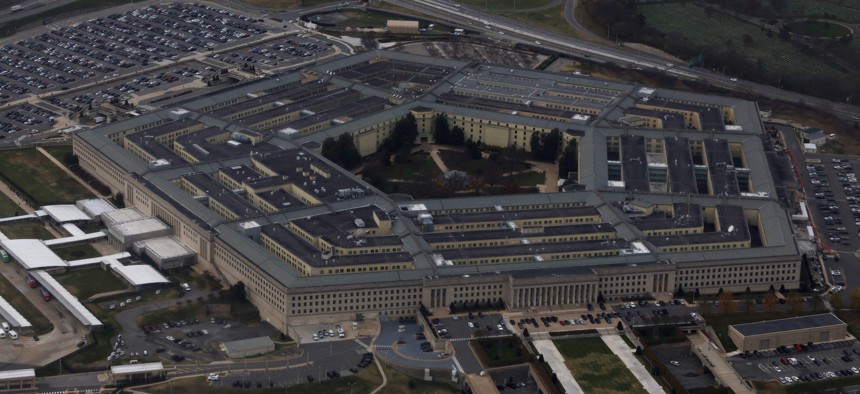
Alex Wong/Getty Images
DOD strategy warns emerging tech is ‘at the forefront’ of information threats
The Pentagon’s updated strategy for operations in the information environment calls for “a cultural shift” to protect national security interests.
The Pentagon publicly released its strategy for operating in the information environment — which covers both physical and digital sources of information — on Friday, outlining how the agency plans to modernize its collecting, processing and sharing of data to better counteract adversaries’ weaponization of the internet and emerging technologies.
DOD “must embrace a cultural shift wherein information is a foundational element of all military strategies and [operations, activities and investments], and where the consistent integration of informational and physical power becomes the norm,” the document states.
“This change ensures DOD’s capability to positively affect the drivers of human and automated system behaviors, shaping operational environments and reinforcing the strength and credibility of the United States."
The shift comes about as nefarious actors and adversary nations — including China, Russia, Iran and North Korea — have increasingly used online platforms and emerging technologies to bolster their ambitions.
As the document notes, these adversaries are “using their informational capabilities to deny information accessibility and propagate malign influence, misinformation, disinformation, propaganda and deception activities to influence and disrupt world order.”
This includes through the use of emerging technologies, which the strategy warned are “at the forefront of these efforts.”
DOD’s new approach “will allow the department to refine its abilities to campaign in and through the information environment across all domains, in a global context, using the electromagnetic spectrum to enable achievement of enduring strategic outcomes.”
The strategy highlights “four lines of effort to enable the department to fully integrate and modernize operations in the information environment,” including new approaches to people and organizations; programs; policies and governance; and partnerships.
In a July 5 letter accompanying the document, Defense Secretary Lloyd Austin said the updated strategy means DOD will focus on “a renewed commitment to innovation, especially in the ways that the department acquires and employs cutting edge capabilities.”
The Department of Defense said in a press release that the new strategy will also improve its ability “to plan, resource and apply informational power toward integrated deterrence, campaigning and building enduring advantage” — tenets, it noted, that align with the 2022 National Defense Strategy.
The new strategy’s release comes after Congress and federal agencies have highlighted foreign malign influence operations being conducted by hostile actors in recent years to undermine U.S. interests, such as Russia’s interference in the 2016 presidential election.
A report released by the Government Accountability Office in January called, in part, for the Pentagon to place a greater emphasis on educating and training its leaders to better navigate more complex information environments.
The Pentagon said it also plans to release an implementation plan for the strategy “which will inform future policies and guidance.”







